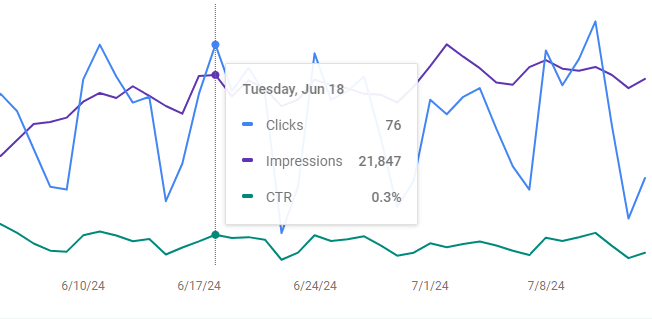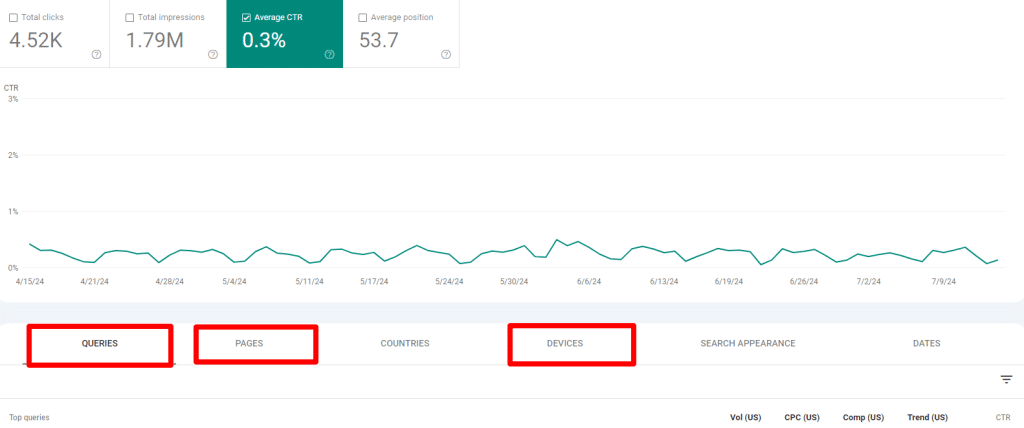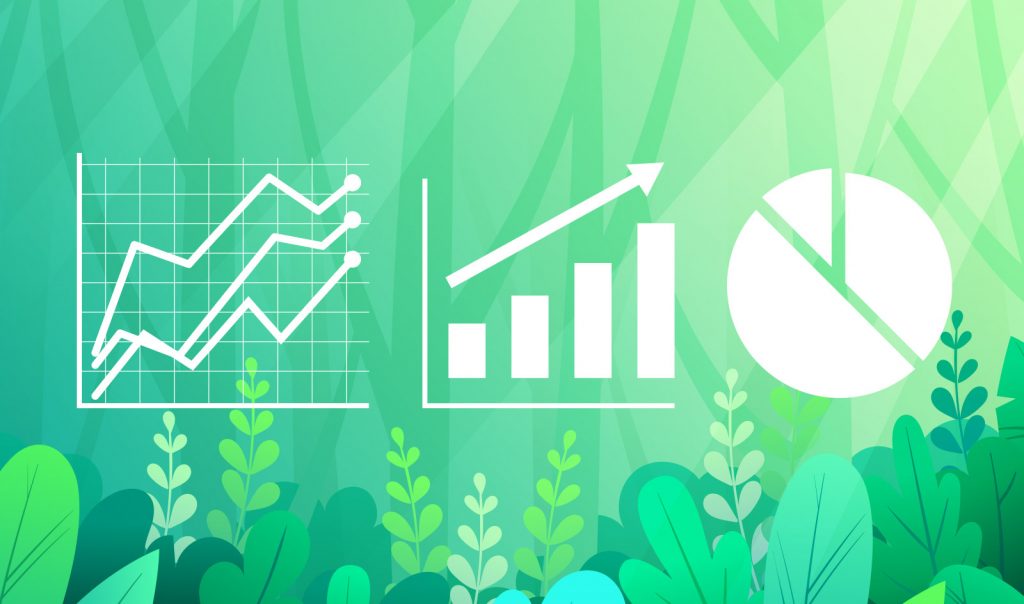In the dynamic world of search engine optimization, organic click-through rate (CTR) stands out as a powerful yet sometimes underappreciated metric. It serves as a crucial bridge between search visibility and actual user engagement, offering valuable insights into how well your content resonates with searchers. As search engines refine their algorithms and user preferences evolve, understanding and optimizing CTR has become an essential skill for digital marketers.
Recent developments in search technology have introduced new facets to CTR optimization, presenting exciting opportunities for marketers to refine their strategies. By exploring industry-specific trends and adapting to emerging SERP features, businesses can enhance their online presence and connect more effectively with their target audience. Mastering organic CTR is a rewarding journey that can significantly improve search performance and overall digital marketing success.
What Are Organic Click-Through Rates?
Organic click-through rate represents the percentage of users who click on your website’s listing in organic search results compared to the total number of users who view the search engine results page (SERP) containing your listing. This metric serves as a key indicator of how well your page titles and meta descriptions perform in attracting users to your site.
The formula for calculating CTR is straightforward: CTR = (Number of Clicks / Number of Impressions) x 100.

In the example above, your page appears in search results 21,847 times (impressions) and receives 76 clicks, your CTR would be 0.3%.
Importance of Click-Through Rates
Understanding and optimizing your organic CTR is crucial for several reasons. Improved visibility in search results can lead to better rankings, creating a positive feedback loop. Higher CTRs translate to increased traffic to your website, potentially resulting in more conversions. Additionally, CTR data provides valuable insights into user behavior and preferences, helping you refine your content strategy and maintain a competitive edge in your industry.
Factors Influencing Click-Through Rates
Several factors can significantly impact your organic CTR:
- SERP position: Generally, higher positions correlate with higher CTRs.
- Title tag optimization: Compelling, relevant titles that include target keywords tend to perform better.
- Meta description quality: Clear, concise descriptions that accurately preview content can improve CTR.
- Rich snippets: Structured data that results in enhanced SERP listings can attract more clicks.
- Brand recognition: Known brands often enjoy higher CTRs due to user trust.
- Search intent alignment: Content that closely matches user intent typically sees higher engagement.
For example, a local bakery might improve its click through rates for “custom birthday cakes” by using a title tag like “Artisanal Custom Birthday Cakes | [Bakery Name] – [City]” and a meta description that highlights unique selling points and includes a call-to-action.
Tools & Techniques
Leveraging a combination of tools and techniques is essential to effectively measure and improve your organic CTR. Google Search Console provides invaluable CTR data for your website’s search performance, allowing you to identify trends and areas for improvement. Tools like SEMrush and Ahrefs offer competitive analysis and keyword tracking capabilities, helping you benchmark your performance against industry standards.
A/B testing is a powerful technique for optimizing CTR. By experimenting with different title tags and meta descriptions, you can identify which elements resonate most with your audience. For instance, an e-commerce site selling eco-friendly products might test two different approaches:
Version A: “Sustainable Home Goods: Eco-Friendly Living Made Easy“
Version B: “Reduce Your Carbon Footprint with Our Eco-Friendly Home Products“
By running these variations and analyzing the results, the site can determine which messaging drives higher CTR and adjust its strategy accordingly.
Organic CTR Statistics by Position
Understanding CTR variations across SERP positions is crucial for setting realistic goals and prioritizing optimization efforts. While exact figures can vary by industry and search intent, general trends show a significant drop in CTR as you move down the SERP.
Typically, the top position enjoys a CTR of around 39%, with a sharp decline for subsequent positions. For example, position 2 might see a CTR of about 18%, while position 10 could be as low as 2%. This data underscores the importance of targeting top positions but also highlights the potential value of optimizing for lower positions on high-volume keywords.
How Can I Improve My Click-Through Rates?
Enhancing your organic CTR requires a comprehensive strategy that combines analytical insights with creative content strategies. Start by refining your title tags and meta descriptions, ensuring they’re not only keyword-rich but also compelling and relevant to user intent. Implement structured data markup to enable rich snippets in search results, making your listings more visually appealing and informative. Focus on improving page load speeds and mobile responsiveness, as these factors can indirectly boost CTR by reducing bounce rates and encouraging return visits.
CTR Benchmarks and Industry Specifics
Click-through rates can vary significantly across different industries and search intents. While specific benchmarks should be approached with caution, understanding industry trends can provide valuable context for your SEO strategy.
Different sectors often experience varying CTR patterns:
- High-intent searches (e.g., transactional queries in e-commerce or finance) often see higher CTRs for top positions, as users are more likely to click on results that closely match their immediate needs.
- Informational queries may have more distributed CTRs across positions, as users might explore multiple results to gather comprehensive information.
- Local searches can see high CTRs for top positions, especially when accompanied by map pack results.
- Branded searches typically have higher CTRs for the brand’s official website, regardless of position.
Note: These observations are general trends rather than fixed benchmarks. Your specific CTR can be influenced by factors such as brand recognition, quality of metadata, SERP features, and device types.
Methodology
To accurately measure and analyze your organic CTR, use Google Search Console to gather comprehensive data over time. Segment this data by device, query type, and page to identify specific areas for improvement. Analyze CTR alongside metrics like bounce rate and time on site for a holistic view of performance. Compare CTR across different time periods to track progress and identify seasonal trends.

Regularly review your CTR data in the context of your overall SEO strategy, considering factors such as SERP features, algorithm updates, and changes in user behavior. This methodical approach will help you continually refine your tactics and improve your organic CTR and search visibility over time.
Mobile vs. Desktop
CTR often differs between mobile and desktop users due to differences in screen size, user behavior, and SERP layouts. Mobile users tend to have higher CTRs for top positions due to limited screen space, while desktop users may explore more results before clicking. To optimize for both, ensure your website is mobile-friendly with fast load times and implement responsive design principles.
Impact of Featured Snippets
Featured snippets can significantly influence CTR patterns in search results. These prominent SERP features, often referred to as “position zero,” can both boost visibility and potentially reduce clicks to traditional organic listings. When a website wins a featured snippet, it may see a substantial increase in CTR for that specific query. However, the presence of a featured snippet can also lead to lower CTRs for other organic results on the page, as some users find their answers directly in the snippet without clicking through.
To optimize for featured snippets, focus on creating clear, concise content that directly answers common questions in your industry. Structure your content with descriptive headings and use formatting like bullet points or numbered lists to increase the likelihood of being selected for a featured snippet. Remember that while featured snippets can drive traffic, they may also satisfy user queries without a click, so it’s crucial to monitor their impact on your overall organic traffic and adjust your strategy accordingly.
Next Steps
Optimizing your organic click-through rate is about crafting a compelling narrative in the search results that resonates with your target audience and entices them to choose your content over competitors. The strategies we’ve discussed – from understanding industry-specific trends to leveraging SERP features and adapting to mobile user behavior – all contribute to a holistic approach that can significantly boost your visibility and engagement in search results.









